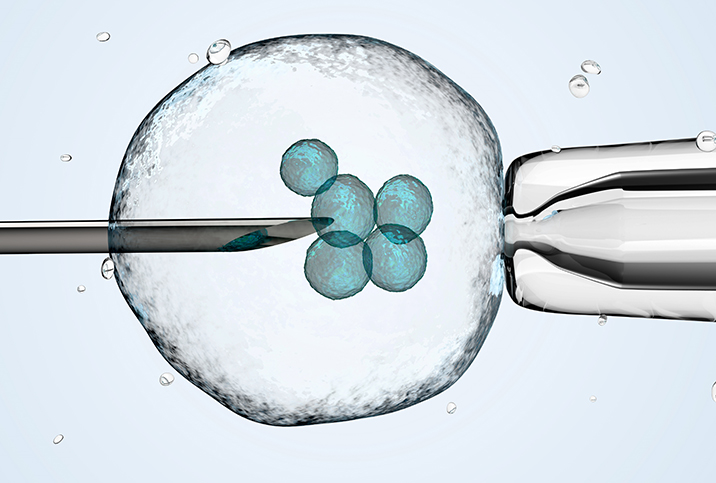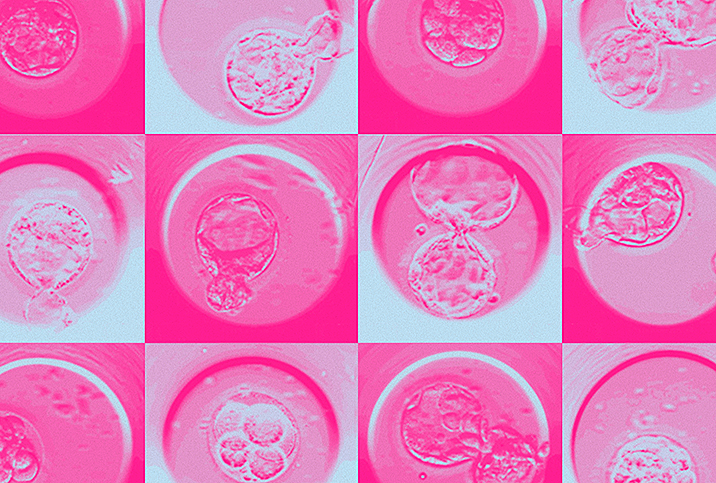Can DNA From Three Parents Help IVF Babies Avoid Serious Illness?

A baby with three biological parents may sound like something out of “Brave New World.”
But it can, and has, been done—even though it’s illegal in the United States—through three-parent in vitro fertilization (IVF), which can enable a woman with mitochondrial disease to have a genetically related child without transmitting the disease to the offspring.
And though this kind of genetic manipulation can be controversial, for mothers with certain genetic diseases, mitochondrial replacement therapy offers a chance they never thought they’d have.
Mitochondrial replacement therapy and IVF
Mitochondrial diseases are associated with mutations in mitochondrial DNA and are inherited exclusively from the mother. The parts of the body that tend to be most affected by mitochondrial diseases are those that need the most energy, such as the heart, brain, muscles and gastrointestinal tract. Symptoms can range from fatigue and exercise intolerance to hearing loss, seizures, strokes, heart failure, diabetes and kidney failure.
Mitochondrial replacement therapy (MRT) provides women with mitochondrial defects a chance to have unaffected biological children.
Traditionally, IVF involves removing eggs from a woman, removing sperm from a man, fertilizing the egg with the sperm, allowing the fertilized egg to form a blastocyst (which subsequently forms the embryo) and then implanting the blastocyst. MRT involves an additional egg from a third person, then manipulating both the recipient egg and the donor egg.
As of 2016, there were three MRT techniques: maternal spindle transfer (MST), pronuclear transfer (PNT) and polar body transfer (PBT). The original technique, in which the recipient egg is injected with donor cytoplasm containing mitochondria, is no longer used.
Mitochondrial replacement therapy was approved in 2015 in the United Kingdom, where it is highly regulated. It is legal, but less regulated in other countries, such as Ukraine and Mexico.
The first three-parent child was born in Mexico in 2016. Dr. John Zhang, who runs a fertility clinic in New York City, traveled to Mexico to perform the procedure for a family struggling with infertility due to the mother being a carrier of Leigh syndrome (a rare neurometabolic disorder in which the central nervous system degenerates). A seemingly healthy baby boy with three biological parents was born from the genetic material of two mothers and one father.
About 1 in 4,000 children in the United States will develop a mitochondrial disease by the age of 10. The goal of this science is to allow mothers carrying genetic mutations that cause these diseases to give birth to healthy babies. However, some researchers are concerned about opening the door to genome editing.
The controversy surrounding three-parent babies
The technique also raises theological and ethical concerns regarding the involvement of the donor with the generated embryo, since the child born will have three distinct genetic materials: One from the father through the spermatozoa; another from the biological mother, represented by nuclear DNA; and the third by the donor of the cytoplasm containing mitochondrial DNA without pathological inheritance.
MRT remains illegal in the United States with research on the experimental procedure banned since 2015 because of a congressional amendment passed the same year which has been renewed every year since.
A group of scientists, patient advocates and bioethicists want to see the prohibition lifted. The technique, they say, could help certain women who are carriers of serious genetic diseases have healthy, biologically related children. In 2019, a series of meetings was held at Harvard Law School to draft policy recommendations to Congress as to how best to move the practice forward in the U.S.


















